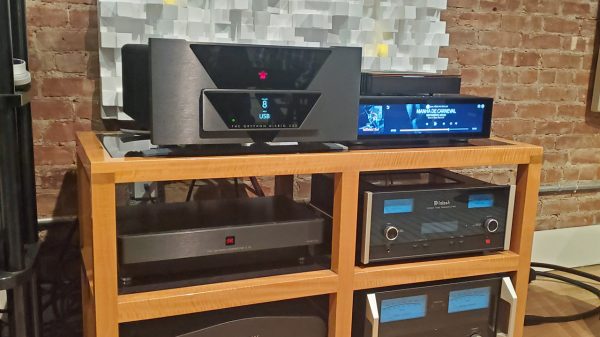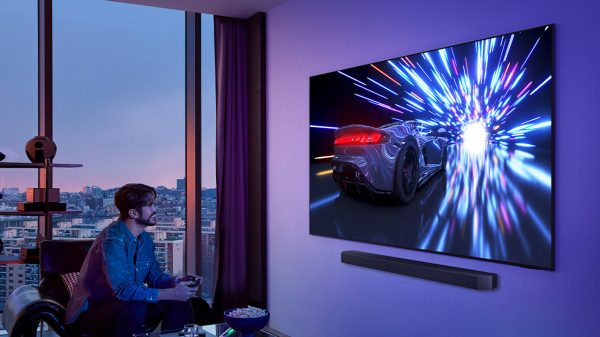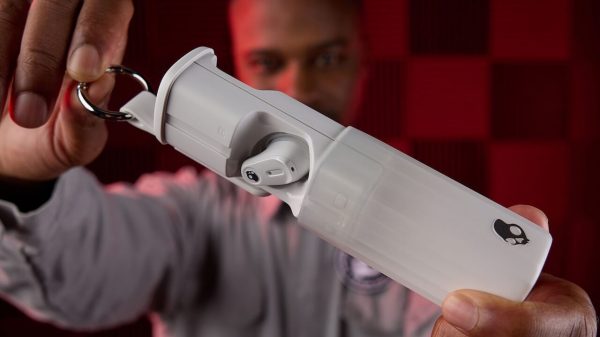One of the best parts of my role at eCoustics is the opportunity to build relationships with some of the most innovative companies in the consumer A/V category and experience their products at home.
The opportunity to listen to the Focal Grande Utopia Be was depressing for the most obvious reason — one would have to sell most of their organs to afford such a state-of-the-art loudspeaker — and I really like my kidneys and liver where they are.
The Focal Theva No.1 offer a very different level of performance but at a price that actually makes me want to own them. $998 USD for a pair of loudspeakers made in France.
The French manufacturer has been designing and manufacturing drivers and loudspeakers internally at their facility in Saint-Étienne, France, since 1979 and jumped into the car audio category in 1989. 2016 was a watershed moment for the brand when it took the Head-Fi community by surprise with the award-winning Utopia headphones.
Over the past 7 years, Focal has become one of the dominant brands in high-end headphones and its latest model, the Bathys wireless headphones have already earned dozens of industry awards for its groundbreaking performance.
Focal and Naim Audio have been sister brands for over a decade and the relationship has paid off in a substantial way for both; the global network of Focal Powered by Naim boutiques have reimagined how high-end audio, home theater, headphones, CI multi-room, and outdoor/marine products are sold.
We’ve had the chance to visit locations in Texas and California and it’s clear that Focal and Naim Audio have a very clear path forward.
Focal’s 260 engineers and craftspeople have access to state-of-the-art engineering and manufacturing facilities and the upside of that is that consumers purchase what feels like a bespoke product; the downside is that their products are not inexpensive and some are well beyond the reach of average consumers.
Quality costs. But sometimes — you would be amazed at what you can get for only $998 USD.
Theva No.1

Having said that, Focal’s ability to engineer and manufacture their own drivers and tweeters also avails them the capability to create products like the new Theva lineup that we covered earlier this year.
EIC Ian White will be following up my review of the Theva No.1 with his own review of the Vestia No.2 next week.
The Utopia, Sopra, and Kanta lineups are very different products at much higher price points but the same design ethos and some trickle down technology is there in regard to the Theva.
The Theva No.1 is the entry-level model in the lineup which also includes 3 floor standing models, a center channel loudspeaker, surround loudspeakers, and two different stands for home cinema users who may wish to mix and match models to create the multi-channel configuration that is ideal for them.
Focal allowed me to test the Theva No.1 for an entire month and that opened the door for some experimentation with a wider range of amplification. The new bookshelf loudspeakers have become the new point of entry in the Focal lineup, replacing the now discontinued Chora line. The next step up the line is the Vestia No.1 bookshelf speaker for $200 more.

The two available loudspeakers are similar in size, utilize similar cabinets, and use 1-inch inverted dome tweeters and 6.5-inch slatefiber midrange/woofers.
The most obvious external difference is the placement of the bass port; the Vestia No.1 are a front ported design whilst the Theva No.1 exhales from the rear of the cabinet.
For those looking to actually place these somewhat heavy loudspeakers on a bookshelf, the front-ported Vestia might prove to be more appropriate; the Theva No.1 require some space from the wall behind them to really open up.

Internally is where the rubber meets the road and we witness the trickle down of technology from Focal’s more expensive loudspeakers; the tweeter is the new TNF design of the inverted dome using Focal’s inverted shaped dome with an ultra-light voice coil and Poron suspension that was first developed for the beryllium tweeter of the Utopia series of loudspeakers.
The inverted shaped dome paired with a urethane tweeter plate and
waveguide help improve dispersion and off-axis listening, whilst the Poron suspension reduces distortion in the rather critical 2kHz to 4kHz range where the human ear is most sensitive.

The 6.5-inch slatefiber woofer first appeared in 2019 and was named for the slate look of the cone, which is manufactured out of recycled carbon fiber. However, instead of weaving the fibers together, it is bonded using a thermoplastic polymer which gives the cone its unique slate-like look.
The use of aligned carbon fiber allows the cone to be extremely rigid while not weaving the fibers together helps with damping. The result is a very stiff, light moving mass cone with improved transients.
My first experience with the slate fiber cones was in the Alpha Evo professional line again showing the trickle down of technology into the Theva line. Focal was also the first manufacturer in the audio segment to utilize recycled carbon fiber which for those of us who are environmentally conscious is a reason to like them as well.
A Closer Look

The review pair featured the light wood finish and solid tan baffle which looks extremely elegant; the tweeter has a black oval waveguide around the bright aluminum/magnesium dome which made me feel that I was being watched. It’s an interesting look that will certainly catch your attention.
The woofer features a brushed metal outer ring and black surround which really makes the slatefiber stand out.
A Focal badge in the bottom center of the baffle matches the ring surrounding the midrange/woofer and it all blends together rather well.

The real panel of the Theva No.1 includes the aforementioned bass port that is placed between the tweeter and midrange/woofer; the binding posts are positioned beneath it and will accept banana plugs, spades, pins, or bare wire.
I do wish that Focal had finished the rear panel of the cabinet with a placard that indicates the model number, impedance, and sensitivity but alas they decided to keep it very clean looking.
Power
The Theva No.1 are rated for up to 100 watts of power with a minimum recommendation of 25 watts per channel into 8 ohms. With a sensitivity rating of 89 dB, you will not need a lot of power to get those bookshelf loudspeakers going and that proved to be the case with my selection of amplification.
The specified frequency response is 58Hz to 28kHz and they are definitely loudspeakers that would benefit from the addition of a subwoofer if you plan on using them in a larger space or as a 2.1 music/home theater system.
Because my primary listening system utilizes a pair of 400 watts per channel amplifiers, it made a lot more sense to set them up in my den which is a smaller listening space and to drive them with a Van Alstine Vision Set 120 Power Amplifier (60 watts/channel) and a modified Dynaco ST-70 that can output 35 watts per channel.
The ST-70 is a Hafler design from the 1960s and all-tube arrangement using 6CG7 drivers and EL-34 power tubes, whilst the Van Alstine is a very underrated solid-state amplifier using a bipolar transistor driver stage and a MOSFET power stage.
Listening

Starting out with The Blues and the Abstract Truth, Oliver Nelson and Eric Dolphy both contribute saxophone parts with Bill Evans on piano, Roy Haynes on percussion, Paul Chambers on double bass, and Freddie Hubbard on trumpet.
Most of this group had met while playing on Olé Coltrane earlier in the year and the sessions from that ended up being the impetus for this album in 1961.
Almost from the very beginning, the Theva No.1 did a very good job of conveying the presence and energy of Hubbard’s trumpet, smoothness of Evans’ piano playing, and the interplay of Nelson and Dolphy.
The double bass was well presented but not pushed as far forward when listening to the same track on my much larger system which can extend much lower in the bass range and has a higher level of resolution.
This was one of those recordings where a subwoofer might fill in the bottom end and allow the loudspeakers to really shine in the upper bass through the treble range; which is where they really impressed.
The overall presentation was very clear and it certainly did not feel as if Chambers’ strong and fluid playing was lacking, but I do know from experience that this aspect of the track can be presented with greater authority and more forward in the overall mix than the Theva No.1s could deliver.
But do remember that we are talking about a pair of $1,000 bookshelf loudspeakers compared to a large pair of planar magnetic loudspeakers that retail for more than four times the price and are 6 feet in height. Perspective is important here.
Percussion was crisp and detailed, whilst kickdrum had rather good impact; the little French bookshelf speakers proved to be rather capable in the 80Hz to 120Hz range with no smearing or thickness that robbed notes of their definition and texture.
My initial plan was to listen to two or three tracks and swap out the amplifier, but I found myself so engrossed it what this bookshelf (or stand-mounted) loudspeaker was doing that I listened to the entire set.
Speed, clarity, and overall pacing were definitely strong attributes of their presentation and I was more interested in listening to music than focusing on the aspects of their performance that were not perfect.
Aside from just the pacing, the Theva No.1 offer a rather fluid presentation regardless of genre and the organic nature of the presentation is extremely engaging at this price point.
Nothing felt artificially elevated or recessed as long as listening levels are kept at moderate levels and placement doesn’t put that rear-firing port in close proximity to the wall behind them.
Vocals could develop too much energy in the room if the volume levels became too high, but that did not impact the overall clarity. Moving the loudspeakers further out into the room without using a lot of toe-in actually positively impacted this issue.

They performed at their best with the speakers pointed nearly straight ahead; pointing the tweeter directly at your listening spot actually resulted in too much treble information and detail and because of the tweeter’s design — it’s better not to do that.
When I switched over to the solid-state Van Alstine, there was slightly less color and fluidity but also faster transients. Again, there was still a strong sense of balance with no unnatural emphasis in the midrange or recess in the treble.
The treble performance was still best with the loudspeakers pointed straight ahead; listening to a number of my favorite Grieg recordings, it was impressive how these loudspeakers could handle the strong dynamic shifts, full range of vocals, and pacing.
The only real critique would be the absence of really strong bass impact, but the overall performance with most genres of music demonstrated very good definition, clarity, and a rather even tonal balance across the entire range of instrumentation.
That last aspect of the Theva No.1’s performance should not be understated; especially at the price point.
But the thing that I kept coming back to was the incredibly impressive soundstage and imaging; regardless of amplification, these loudspeakers image well beyond anything I would expect from a loudspeaker in this price range.
Set them up 2 feet from the wall behind them, roughly 8 feet apart and 9 feet from your listening position and you will understand what I’m talking about.

Conclusion
Having just reviewed the state-of-the-art TAD CE1-TX Stand-mount Loudspeakers ($35,000/pair) before their arrival, the Focal Theva No.1 were at a severe disadvantage when I unboxed them and set them up in my den.
It would have been easy to nitpick little aspects of their performance in comparison to the Japanese loudspeakers that cost more than a decent car, but I came away from the review feeling that Focal had succeeded at creating an entry-level loudspeaker worthy of its brand and certainly a very strong performer below $1,000 USD.
They possess the clarity and detail in the treble that make Focal’s speakers special, the fluidity of the larger Kanta models, and the tonal balance of the Chora 806 that charmed the pants off our esteemed EIC Ian White.
Combine all of those positive attributes and you have an extremely good pair of loudspeakers that are engaging, colorful, and lively in the best possible way.
A very worthy addition to our “Best Bookshelf Loudspeaker” list for 2023 and certainly one of the best entry-level loudspeakers we have auditioned from any of the European manufacturers in some time.
The Focal Theva No.1 might be the most affordable model in the lineup but it has honored its prestigious maker in a very real way.
Where to buy: $998/pair at Crutchfield
For more information: focal.com
Related:







































ORT
October 4, 2023 at 10:59 pm
Classic good looks, especially so in the lighter wood finish. It may be that speakers are the last thing most people look at let alone listen to in order to hear how they reproduce their music.
Still partial to the Klipsch RP-600M (yup, the previous version!) in piano black. I’ve seen those in person but have not seen these that I can recall. Which if I did see ’em bodes poorly for the looks of that speaker.
ORT
Ian White
October 6, 2023 at 12:08 am
ORT,
Previous version of the RP-600M was superior. The Focal finish is really high quality. I wish the Chora 806 was still around because those speakers sounded great and looked even better. I kick myself for not buying those when I had them under review.
IW